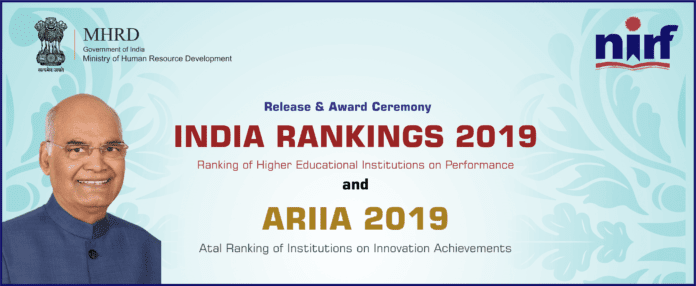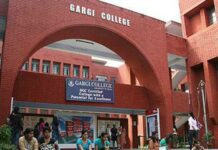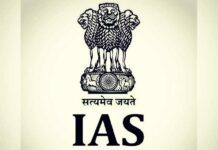NIRF, commonly expanded as The National Institutional Ranking Framework (NIRF), accepted by the MHRD and launched by Honorable Minister for Human Resource development, outlines a methodology to rank institutions across the country. Its various parameters involve teaching and learning resources, research and professional practice, graduation and outcome, outreach and inclusivity and perception.
- Delhi University
Six colleges of the Delhi University have entered the top 10 rankings by the HRD Ministry with Miranda House scoring a hat trick in bagging the first rank. While Hindu College has been ranked second; St Stephens College, Lady Sri Ram College for Women, Sri Ram College of Commerce and Hansraj College have bagged the fourth, fifth, seventh and ninth ranks respectively. Also, 22 more DU colleges have entered in the list of top 100 colleges in the country.
- Overall
The Indian Institute of Technology, Delhi (IIT) is ranked third in the overall ranking of higher educational institutions and also the second-best among the engineering institutions. This prestigious institute has bagged the ninth position among the management institutions.
- Universities
The Jawaharlal Nehru University (JNU) bagged the seventh rank in overall category and has also been ranked the second best university. Delhi University and Jamia Millia Islamia have bagged the 13th and the 12th rank respectively. Delhi Technological University (DTU) and Guru Gobind Singh Indraprastha University (GGSIPU) have been ranked at 47th and 66th positions respectively.
- Pharmacy
Jamia Hamdard has been placed as the best varsity for pharmacy education and is ranked 18th among universities.
The Principal of Miranda House Bijaylaxmi Nanda told PTI, “It has been hat trick for us. Our emphasis has always been on research, innovation & teaching beyond classrooms.”
“We have been persistent in our efforts and have been at it. Our infrastructure has grown a lot and there has been a lot of focus on mentoring. Our science blocks have been built and our labs are being equipped with new-age technologies,” she further said.
V Ramgopal Rao IIT-Delhi’s Director said that he was happy with the institute’s improvement in the NIRF ranking by one more position this year.
He further added, “In the last two years, we have moved from the 4th position to the 2nd position. This is a reflection of the various measures we have taken to improve our outreach activities as well as the research ecosystem.”
Anju Srivastava Hindu College’s Principal mentioned that the college will soon come up with the research centre and also a new building is under construction. “We are encouraging our teachers and students to get into research,” Srivastava said.
JNU Vice-Chancellor Mamidala Jagadesh Kumar tweeted, “A proud moment for all of us in the Golden Jubilee year. In the National Institutional Ranking Framework, JNU ranked 2 in the University category and 7 in the overall category. Congratulations to all the stake holders. JNU continues to focus on achieving academic excellence.”
Jamia Hamdard vice-chancellor Dr Seyed Ehtesham Hasnain said that the varsity is trying to reinvent itself. It will soon start a programme in the performing arts and has even started law courses and a course in catering management.
Lauding the efforts by the HRD Ministry to bring in India’s own ranking system, the principal of Lady Sri Ram College (LSR) Suman Sharma said that the institute has applied to UGC for starting a Women Development Centre in the college.
A total of 3,127 institutions participated in the ranking process under overall rankings, category-specific and domain-specific ranking. In all, 4,867 applications present for the rankings, the rankings were made by the 3,127 applicant institutions under various categories and domains.
As per the NIRF website, factors which combine to determine the TLR score are “student strength including doctoral students”; “faculty-student ratio with emphasis on permanent faculty”; “combined metric for faculty with PhD (or equivalent) and experience”; and “total budget and its utilization”.
As per the NIRF website, factors which combine to determine the TLR score are “student strength including doctoral students”; “faculty-student ratio with emphasis on permanent faculty”; “combined metric for faculty with PhD (or equivalent) and experience”; and “total budget and its utilization”.
~ Preksha Mishra













